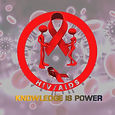Treatment options for HIV
Treatment should begin as soon as possible after a diagnosis of HIV, regardless of CD4+ count and viral load. The main treatment for HIV is antiretroviral therapy, a combination of daily medications that stop the virus from reproducing. This helps protect CD4 cells, keeping the immune system strong enough to fight off disease.
Antiretroviral therapy helps keep HIV from progressing to AIDS. It also helps reduce the risk of transmitting HIV to others.
When treatment is effective, the viral load will be “undetectable.” The person still has HIV, but the virus is not visible in test results. However, the virus is still in the body. And if that person stops taking antiretroviral therapy, the viral load will increase again and the HIV can again start attacking CD4 cells.
HIV medications
More than 25 antiretroviral therapy medications are approved to treat HIV. They work to prevent HIV from reproducing and destroying CD4 cells, which help the immune system fight infection. This helps reduce the risk of developing complications related to HIV, as well as transmitting the virus to others.
These antiretroviral medications are grouped into six classes:
non-nucleoside reverse transcriptase inhibitors (NNRTIs)
fusion inhibitors
CCR5 antagonists, also known as entry inhibitors
integrase strand transfer inhibitors

Treatment regimens
The U.S. Department of Health and Human Services (HHS) generally recommends a starting regimen of three HIV medications from at least two of these drug classes. This combination helps prevent HIV from forming resistance to medications. (Resistance means the drug no longer works to treat the virus.)
Many of the antiretroviral medications are combined with others so that a person with HIV typically takes only one or two pills a day.
A healthcare provider will help a person with HIV choose a regimen based on their overall health and personal circumstances. These medications must be taken every day, exactly as prescribed. If they’re not taken appropriately, viral resistance can develop, and a new regimen may be needed.
Blood testing will help determine if the regimen is working to keep the viral load down and the CD4 count up. If an antiretroviral therapy regimen isn’t working, the person’s healthcare provider will switch them to a different regimen that’s more effective.

HIV prevention
Although many researchers are working to develop one, there’s currently no vaccine available to prevent the transmission of HIV. However, taking certain steps can help prevent the spread of HIV.
Safer sex
The most common way for HIV to spread is through anal or vaginal sex without a condom. This risk can’t be completely eliminated unless sex is avoided entirely, but the risk can be lowered considerably by taking a few precautions. A person concerned about their risk of HIV should:
Get tested for HIV. It’s important they learn their status and that of their partner.
Get tested for other sexually transmitted infections (STIs). If they test positive for one, they should get it treated, because having an STI increases the risk of contracting HIV.
Use condoms. They should learn the correct way to use condoms and use them every time they have sex, whether it’s through vaginal or anal intercourse. It’s important to keep in mind that pre-seminal fluids (which come out before male ejaculation) can contain HIV.
Limit their sexual partners. They should have one sexual partner with whom they have an exclusive sexual relationship.
Take their medications as directed if they have HIV. This lowers the risk of transmitting the virus to their sexual partner.
Other prevention methods
Other steps to help prevent the spread of HIV include:
Avoid sharing needles or other drug paraphernalia. HIV is transmitted through blood and can be contracted by using contaminated materials.
Consider PEP. A person who has been exposed to HIV should contact their healthcare provider about obtaining post-exposure prophylaxis (PEP). PEP can reduce the risk of contracting HIV. It consists of three antiretroviral medications given for 28 days. PEP should be started as soon as possible after exposure, but before 36 to 72 hours have passed.
Consider PrEP. A person at a high risk of HIV should talk to their healthcare provider about pre-exposure prophylaxis (PrEP). If taken consistently, it can lower the risk of contracting HIV. PrEP is a combination of two drugs available in pill form.
Healthcare providers can offer more information on these and other ways to prevent the spread of HIV.
.jpg)




